Invented by Manoj K. Sharma, Wendy Benjamin, Sarita Mittal, Ashwin Basarkar, Chakravarthy Nachu Narasimhan, Ramesh S. Kashi, Mohammed Shameem, Soumendu Bhattacharya, Yogita Krishnamachari, Merck Sharp and Dohme LLC
Introduction:
The development of immunotherapy has revolutionized the field of oncology by providing new treatment options for various types of cancer. One such breakthrough in immunotherapy is the use of anti-programmed death receptor 1 (PD-1) antibodies. These antibodies have shown remarkable efficacy in treating several types of cancer, including melanoma, lung cancer, and bladder cancer. However, the stability of these antibodies and the methods for their use are crucial factors that determine their effectiveness and market potential.
Stable Formulations:
Stability is a critical aspect when it comes to the formulation of anti-PD-1 antibodies. These antibodies are highly sensitive to environmental factors such as temperature, pH, and light. Therefore, developing stable formulations that can maintain the integrity and efficacy of these antibodies is of utmost importance. Stable formulations ensure that the antibodies retain their therapeutic properties throughout their shelf life and during administration to patients.
Several pharmaceutical companies are investing significant resources in developing stable formulations for anti-PD-1 antibodies. These formulations typically involve the use of excipients that protect the antibodies from degradation and maintain their stability. Excipients such as sugars, amino acids, and surfactants are commonly used to stabilize these antibodies. Additionally, the use of advanced technologies like lyophilization and nanoparticle encapsulation has shown promise in enhancing the stability of anti-PD-1 antibodies.
The market for stable formulations of anti-PD-1 antibodies is expected to witness substantial growth in the coming years. As more pharmaceutical companies enter the immunotherapy market, the demand for stable formulations will increase. Moreover, the growing number of clinical trials and the expanding indications for anti-PD-1 antibodies will further drive the market for stable formulations.
Methods for Use:
In addition to stable formulations, the methods for the use of anti-PD-1 antibodies also play a crucial role in their effectiveness. These antibodies work by blocking the PD-1 receptor on immune cells, thereby unleashing the immune system’s ability to recognize and destroy cancer cells. However, the timing, dosage, and combination with other therapies are essential factors that determine the success of anti-PD-1 antibody treatment.
Clinical trials have demonstrated that the use of anti-PD-1 antibodies as monotherapy or in combination with other immunotherapies or chemotherapy can significantly improve patient outcomes. Determining the optimal dosage and treatment schedule is an ongoing area of research. Additionally, identifying biomarkers that can predict patient response to anti-PD-1 antibodies is crucial for personalized treatment strategies.
The market for methods of use for anti-PD-1 antibodies is expected to grow as more clinical data becomes available and the understanding of these antibodies’ mechanisms of action deepens. Pharmaceutical companies are investing in research and development to optimize treatment regimens and identify biomarkers that can guide treatment decisions. Furthermore, the increasing adoption of precision medicine approaches in oncology will further drive the demand for personalized treatment strategies using anti-PD-1 antibodies.
Conclusion:
The market for stable formulations and methods for use of anti-PD-1 antibodies is poised for significant growth in the coming years. Stable formulations ensure the integrity and efficacy of these antibodies, while optimized methods of use maximize their therapeutic potential. As the understanding of anti-PD-1 antibodies continues to evolve, pharmaceutical companies are investing in research and development to improve stability, optimize treatment regimens, and identify biomarkers for personalized treatment strategies. These advancements will not only benefit patients but also contribute to the growth and success of the immunotherapy market.
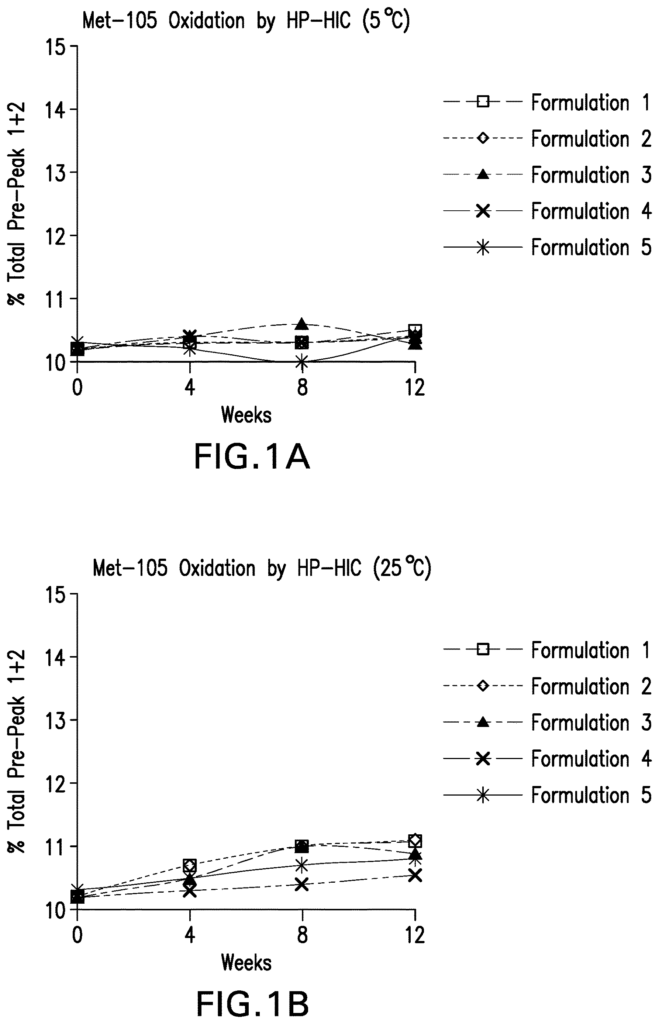
The Merck Sharp and Dohme LLC invention works as follows
The invention relates stable formulations or antigen-binding fragments of antibodies directed against the human programmed death receptor PD-1. In certain embodiments, the formulations of this invention contain between 5 and 200 mg/mL of anti-PD-1 antibodies or antigen binding fractions thereof. The invention also provides methods of treating cancers using stable formulations. In certain embodiments, the formulations can be administered intravenously or subcutaneously to a patient.
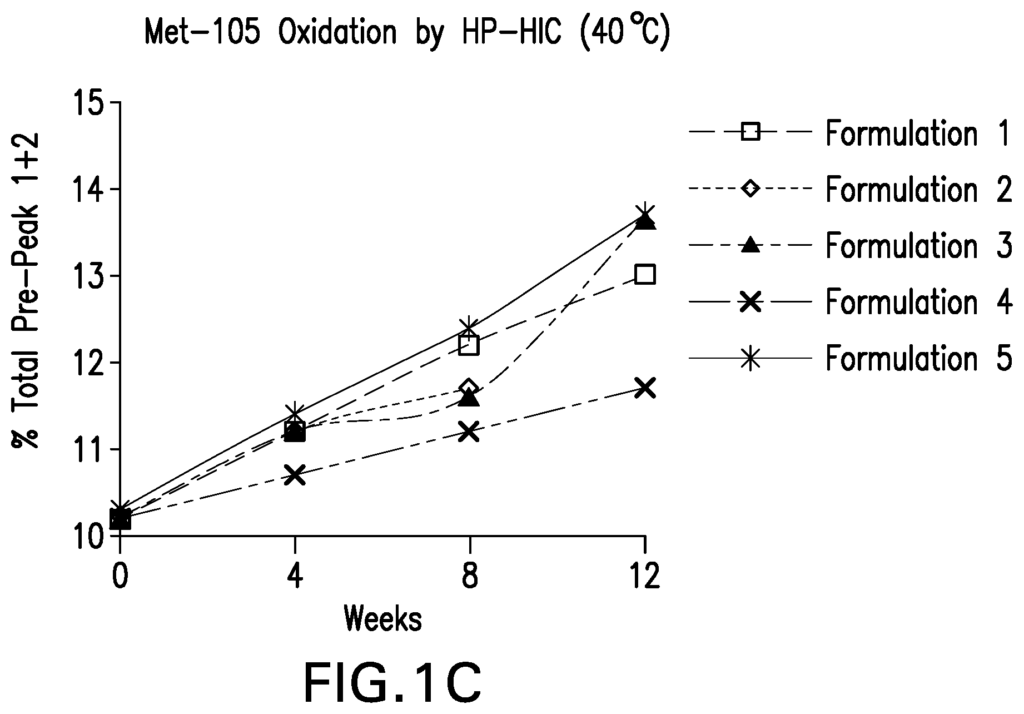
Background for Stable formulations and methods for use of anti-programmed death receptor 1 antibodies
Garon et. al., Lancet 2014, 384: 1109-17; Robert et. al., N Engl J Me 2015, 372: 2521-32; Robert et. al., N Engl J Me 2015, 372: 320-30; Topalian et. al., N Engl J Me 2012, 366, 2443-54. N Engl J Med 2015, 372: 2018-28; Hamid et al., N Engl J Med 2013, 369: 134-44; Robert et al., Lancet 2014, 384: 1109-17; Robert et al., N Engl J Med 2015, 372: 2521-32; Robert et al., N Engl J Med 2015, 372: 320-30; Topalian et al., N Engl J Med 2012, 366: 2443-54; Topalian et al., J Clin Oncol 2014, 32: 1020-30; Wolchok et al., N Engl J Med 2013, 369: 122-33). The interaction between the PD-1 receptor and its ligands PD-L1 or PD-L2 on tumor cells and immune infiltrating cell regulates T-cell mediated immunity and may be a factor in immune escape. (Pardoll, D. M., Nat Rev Cancer, 2012, 12:252-64). The binding of PD-1 with either its ligands or T-cells leads to an inhibitory response. Monoclonal antibodies to the PD-1 (KEYTRUDA?) receptor are among the immunotherapies that target the PD-1 axis. OPDIVO (nivolumab), Bristol-Myers Squibb, Princeton, N.J., and KEYTRUDA? Nivolumab (OPDIVO? (atezolizumab), Genentech, San Francisco, Calif.). Both therapeutic approaches have shown anti-tumor effect in many cancer types.
Antibodies used in human subjects should be stored and transported until the administration point. To achieve the desired antibody level in a subject in a reproducible manner, the drug must be stored in a form that preserves its bioactivity. Anti-human PD-1 antibody formulations are needed for pharmaceutical applications, e.g. for the treatment of cancers and infectious disease. Such formulations should have a long shelf life, be stable during storage and transport, and be able to be administered at high concentrations. Subcutaneous use, for example, or low concentrations (e.g. “For intravenous administration.
The invention provides an anti-human PD-1 antibody formulation, comprising: a) about 5 mg/mL to about 200 mg/mL of an anti-human PD-1 antibody, or antigen binding fragment thereof; b) about 5 mM to about 20 mM buffer; c) a stabilizer selected from the group consisting of: (i) about 6% to about 8% weight/volume (w/v) sucrose, trehalose or (2-hydroxypropyl)-?-cyclodextrin; (ii) about 3% to about 5% w/v mannitol, sorbitol, L-arginine, a pharmaceutically acceptable salt of L-arginine, L-proline, or a pharmaceutically acceptable salt of L-proline; and (iii) about 1.8 to about 2.2% w/v glycine, or a pharmaceutically acceptable salt thereof; d) about 0.01% to about 0.10% non-ionic surfactant; and e) about 1 mM to about 20 mM anti-oxidant.
In embodiments of the present invention, the buffer has a pH between 5.0 to 6.0.
In specific embodiments, the stabilizer of the anti-human PD-1 antibody formulation is selected from the group consisting of: (i) about 6% to about 8% w/v sucrose, trehalose or (2-hydroxypropyl)-?-cyclodextrin; (ii) about 3% to about 5% mannitol, sorbitol, or L-proline, or a pharmaceutically acceptable salt of L-proline; and (iii) about 1.8 to about 2.2% w/v glycine, or a pharmaceutically acceptable salt thereof.
In certain embodiments, anti-human PD-1 antibodies formulations also contain from about 1% w/v to about 3% w/v L arginine or a pharmaceutically accepted salt thereof.
The invention also provides a formulation of anti-human PD-1 antibodies that contains: a. about 25 mg/mL up to 200 mg/mL anti-human PD-1 antibodies, or antigen-binding fragments thereof; b. about 5 mM up to 20 mM buffer histidine; c. about 6% to 8% w/v sugar; d. about 0.01% to 0.04% w/v Polysorbate 80; e. about 1 mM
In specific embodiments, anti-human PD-1 antibodies formulation further contains from about 1% w/v to about 3% w/v L arginine or a pharmaceutically accepted salt thereof.
The invention also provides an antihuman PD-1 antigen-binding fragment formulation, which comprises: a. about 75-200 mg/mL antihuman PD-1 antibodies or antigen-binding fragments thereof; b. about 8 mM-12 mM of histidine buffer; c. about 5 mM-10 mM of methionine; d. about 6%-8% w/v. sucrose; e. about 0.01%-0.04% w/
The invention also provides an antihuman PD-1 antigen-binding fragment formulation comprising a) approximately 125-200 mg/mL antihuman PD-1 antibodies, or antigen-binding fragments thereof; b), about 10 mM of histidine buffer; c), about 10 mM of L-methionine, or a pharmaceutically accepted salt thereof; d) approximately 7 w/v sugar; and e), about 0.02%-w/v polysorbate
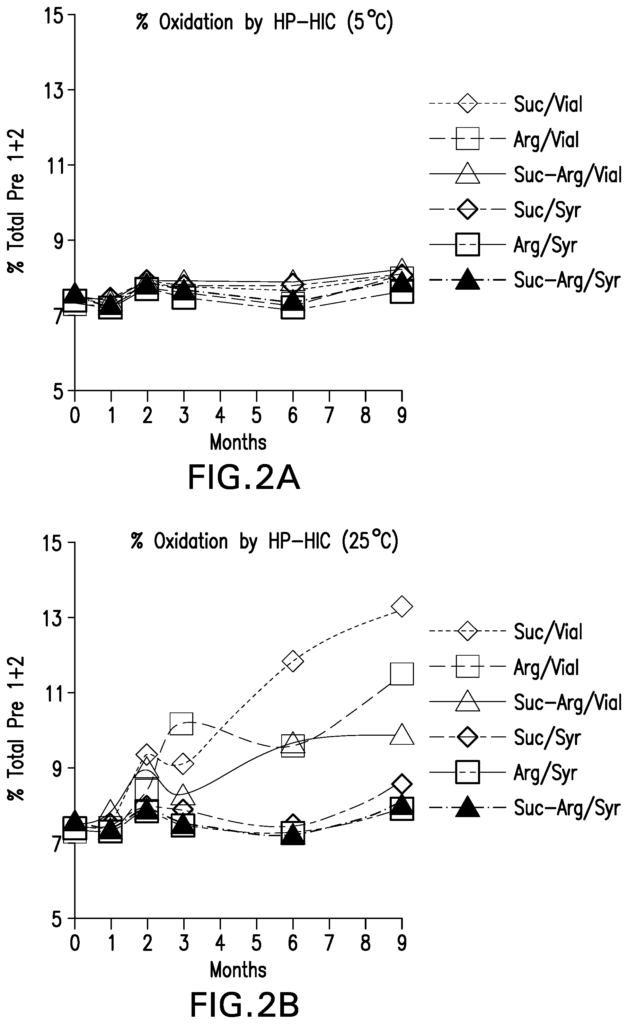
In some embodiments, anti-human PD-1 antibodies formulations further comprise from about 1.25% w/v to about 2.5% w/v L arginine or a pharmaceutically accepted salt thereof. In some embodiments the arginine used is L-arginine. In some embodiments, arginine can be L-arginine HCl.
The invention also provides an anti-human PD-1 antibody formulation, comprising: a) about 5 mg/mL to about 75 mg/mL of an anti-human PD-1 antibody, or antigen binding fragment thereof; b) about 8 mM to about 12 mM histidine buffer; c) a stabilizer selected from the group consisting of: (i) about 6% to about 8% w/v sucrose, trehalose or (2-hydroxypropyl)-?-cyclodextrin; (ii) about 3% to about 5% w/v mannitol, sorbitol, L-proline or a pharmaceutically acceptable salt of L-proline; and (iii) about 1.8 to about 2.2% w/v glycine, or a pharmaceutically acceptable salt thereof; d) about 0.01% to about 0.04% polysorbate 80; and e) about 5 mM to about 10 mM methionine or a pharmaceutically acceptable salt thereof.
In certain embodiments, a metal chelator is included in the formulation of anti-human PD-1 antibodies. The metal chelator in certain embodiments is DTPA. In some embodiments, the DTPA concentration is between 10 M and 30 M.
The invention also provides a liquid formulation of anti-human PD-1 antibodies that is reconstituted by a lyophilized formula. This formulation comprises: a. about 125 mg/mL up to 175 mg/mL anti-human PD-1 antibodies, or antigen-binding fragments thereof; b. about 8 mM up to 12 mM of histidine buffer; c. a stabilizer selected from: (i.) about 3% – 8% w/v
In specific embodiments, the anti-PD-1 antibodies are pembrolizumab (or an antigen binding fraction of pembrolizumab).
Also, provided herein are method of treating cancer or chronic infection on a human patient who is in need of such treatment. The methods include: administering to the patient an effective amount anti-human PD-1 antibodies formulations.
The invention provides stable formulations that contain an anti-PD-1 antigen or antigen binding fraction thereof, which binds to human PD-1. These formulations are useful in methods of treating cancer, an immune disorder, or immune conditions, and include intravenous or cutaneous administration of the antigen to a patient. In some embodiments, the antigen-binding fragment of pembrolizumab is used as the anti-PD-1 antibodies. The invention addresses the problems of increased viscosity, and increased aggregation that are associated with formulations containing high concentrations of anti-PD1 antibody. The invention also provides formulations containing pembrolizumab, or an antigen-binding fragment thereof, with reduced methionine oxygenation, including the reduced oxidation methionine105, located in CDR3 heavy chains of pembrolizumab.
The formulations are useful for the subcutaneous delivery of a patient who needs them.” It is important that formulations intended for subcutaneous delivery (SC) contain a high concentration of antibodies (75-200mg/ml) in order to provide maximum therapeutic benefit to patients. Due to the bioavailability history of SC injections of 50-60% and the expected dosage range of an antigen product, a high concentration of API may be required for SC formulations. A high concentration of antigen-binding fragments or antibodies can contribute to undesirable properties in the product, such as aggregation. Low injectability due increased viscosity, higher than physiological osmolality, and increased aggregation. It is therefore preferred that an anti-body product intended for SC administering balances the effects on concentration while maintaining the level of drug which will provide the greatest therapeutic benefit. A product that is ideal will have a high concentration of protein, low viscosity and an osmolality close to physiological conditions. It should also exhibit a low degree of aggregation when stored under normal conditions. A high protein concentration can make it difficult not only to remove the product with a syringe but also to inject the required dose from the syringe into the patient (syringeability). The invention provides formulations with a high concentration or antigen-binding fragment of an antibody and acceptable viscosity levels for subcutaneous administration. The formulations of this invention also do not cause high levels of aggregates, as is shown more in detail in the Examples.
Previous forced degradation studies on pembrolizumab (DS) were performed to investigate product degradation pathways, and to isolate and characterized impurities. Pembrolizumab DS underwent various stress tests. Analysis of the stressed samples revealed that pembrolizumab DS is sensitive to light and peroxide. Pembrolizumab was degraded primarily by oxidation, which occurred in the heavy-chain CDR under peroxide stress. It also degraded mainly through oxidation and light exposure of Met105 residues and Fc methionine. Pembrolizumab retained its bioactivity in most of the stress conditions tested for degradation levels. Surface Plasmon Resonance detected a reduction in affinity for PD-1 when peroxide was stressed. A methionine in the CDR or an exposed residue can impact the biological activity of an antibody by oxidation. The formulations of the present invention can reduce the oxidation of Met105 in the heavy chain CDR of pembrolizumab.
I. Definitions & Abbreviations
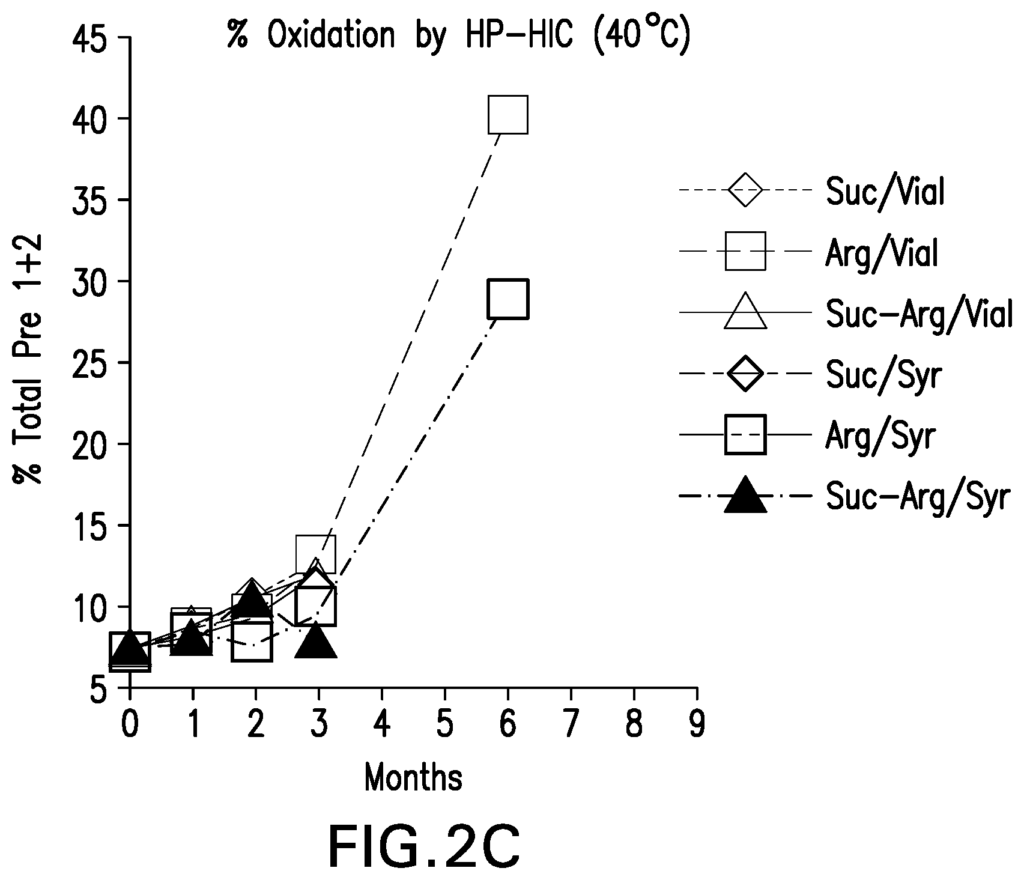
The following abbreviations are used in the specification and the appended claims:
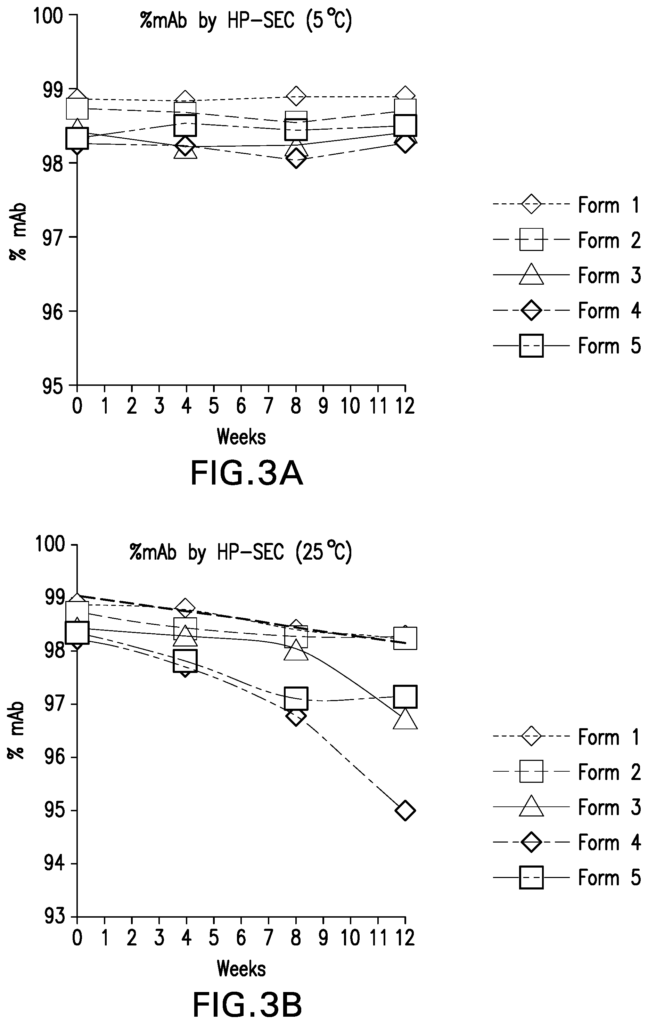
Click here to view the patent on Google Patents.
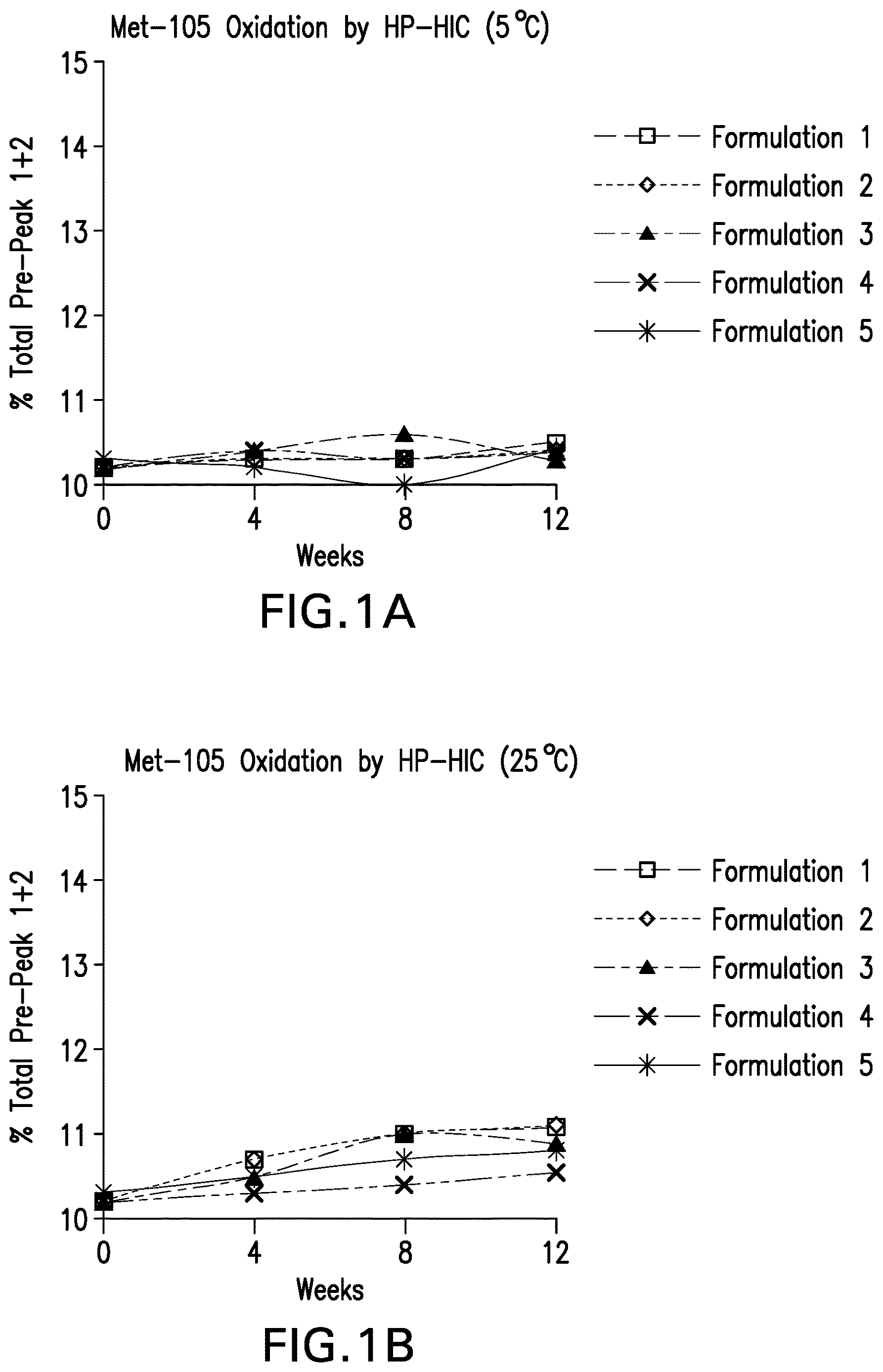
Leave a Reply